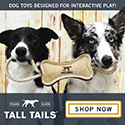
Having this rescue dog introduction guide to help you introduce your new dog to others should be very beneficial. Some rescue dogs are quite cautious when they are around new people.
However, once they get to know the person a little better, they often seem to bond very tightly. This is especially true if you give them lots of physical attention. They seem to crave hugs and physical touch.
Make Challenging Introductions Easier With These Rescue Dog Introduction Guide Tips
Introducing rescue pets, whether to new people or other dogs, can be challenging and, at times, quite difficult. This is basically because you have no clue about their previous experiences.
The fact is that every dog has its own unique personality and emotional baggage from its life up to this point in time. However, the rules and guidelines on the safe introduction of dogs apply to all dog types.
Basic Tips From the Rescue Dog Introduction Guide Are Easy to Follow
Independent of your dog’s personality, this rescue dog introduction guide has a number of tips on how to introduce them to unfamiliar people. Careful adherence to these tips should help you achieve peaceful socialization at all times.
Pay attention to the dog and guide the other party on what to do! Being able to read a dog’s body language is very helpful. I recommend that you do a little research on this topic as this skill will come in handy many times when dealing with dogs.
Generally, dogs love calm and quiet introductions. Never ever allow a stranger to touch or even speak to your dog unless you are completely sure that your dog is open to the attention.
When introducing your rescued animal to new folks it is as important to pay as much attention to the person as it is to the animal. They also bring past experiences to the encounter that will have an effect on how well things go.
Some general tips that should guide the introduction of your rescued dog to new folks include the following:
- Pay attention to your pup’s body language. This includes their eyes, ears, and even tails as their body are how they communicate their feelings.
- Kindly ask the person to keep their excitement under control as too much enthusiasm can prove overwhelming to the new pup.
- Let your dog have complete control over when to meet and engage a new individual as much as possible. Sometimes, it is necessary for another person to be involved in their care and you cannot delay the introduction. However, the ideal situation is when the dog is calm and interested in approaching the individual being introduced to them.
- Remind the other party to pet your rescue dog’s side and not their head. A scratch on the chest is usually well-received as well. They should also avoid making direct eye contact as this may be taken as confrontation by the dog. No one should place their hand anywhere near their muzzle in the beginning, not even for the dog to smell their hand.
- Provide treats and give some to the other person. This is the best way to help introductions go smoothly.

How to introduce a rescued dog at home using the rescue dog introduction guide
When making introductions at home, have some ground rules set beforehand. Have the new folk informed that they should adhere to the following tips.
�� Dress in clothes that they do not mind getting dirty.

�� Focus on you before shifting their attention to the rescue dog.

When it comes to outdoor introductions
After saying hi, let your dog sniff the new person’s shoes.

If your dog happens to be nervous when meeting new people, try not to introduce too many people in one session.
How to introduce your rescue dog on walks
Whenever a stranger approaches your dog, speak up and let them know what to do. Use phrases such as:
- Go ahead and say hi.
- Please let him sniff your shoes first.
- Do not place your hand near his muzzle, even for him to sniff it.
- Keep your hands away from his face at the beginning,
- He loves to have his ears (or chest) scratched.
Keep Your Dog In Mind
You have to be very aware of your animal’s personality, body language, and any particular fears or behaviors. If she is social, follow the guidelines above for introductions. However, don’t feel bad about avoiding strangers on walks if need be or asking them to not approach your dog.
If your dog is the nervous type, try gradual introductions. Keep in mind that with time, patience and practice:
- you will acquire the necessary skills to help with the introduction of your dog
- your dog will become comfortable meeting new people
Photos courtesy of Pixabay







